Focal Electra 1028 Be Speaker System Page 2
The CC 1008 Be center is a three-way design, its midrange and tweeter mounted vertically between two woofers that appear similar to those in the 1028 Be. The midrange is 3 inches in diameter and likely the cutest W cone in the Focal stable. It covers just a smidge more than the two octaves above 500 Hz, while the beryllium tweeter takes over above 2.2 kHz. The center’s input terminal shares the back panel with a rectangular port.
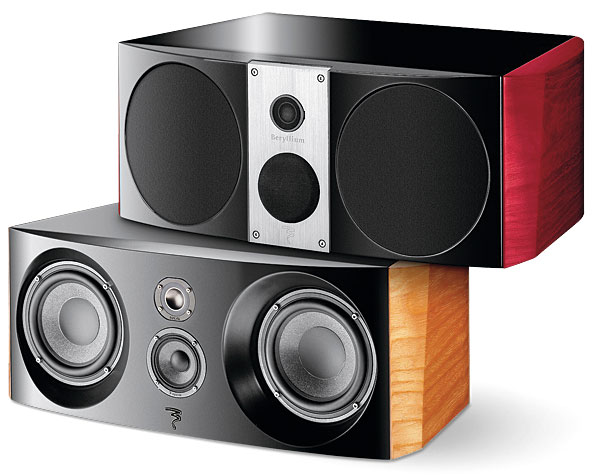
The 1008 Be bookshelf speaker, which I used for surround duties, is a two-way design, also ported in the rear. The moving bits are a woofer similar to the midrange in the 1028 Be and a beryllium tweeter. Focal offers an optional stand for this model. For my setup, I used a pair of older, less deluxe, but strong and serviceable 24-inch stands.
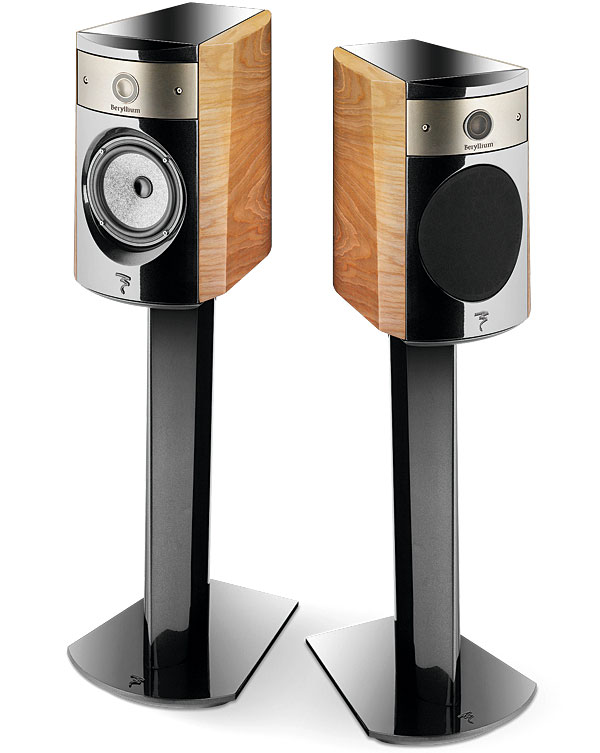
Two other members of the Electra Be II family were not reviewed here. The SR 1000 Be surround can be used in a number of different configurations, including bipolar. A taller tower speaker, the 1038 Be, has three 7-inch woofers. The 1038 Be makes more sense in a subwoofer-free, two-channel music system. Focal also offers a similar, somewhat less expensive line of Electra speakers with aluminum/magnesium tweeter domes.
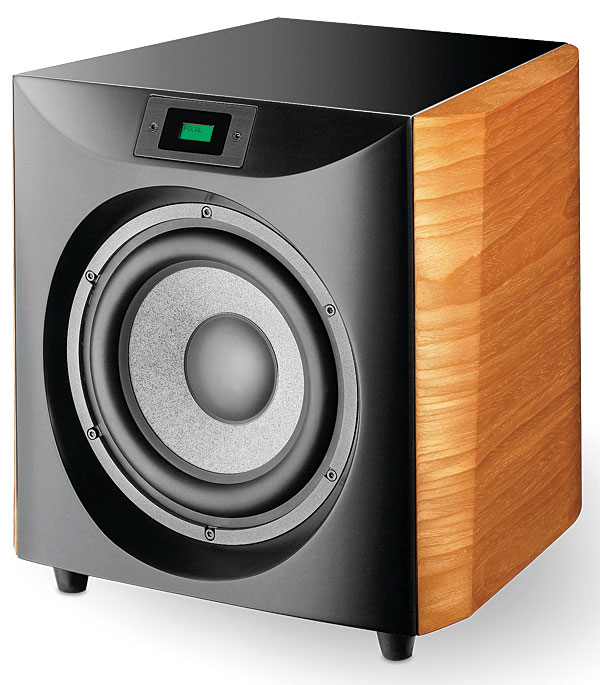
The Electra SW 1000 Be subwoofer offers the usual features and some not-so-usual ones, most of them implemented by DSP. There’s a 13-inch, W-cone woofer, ported on the bottom and driven by a 600-watt (RMS) BASH amplifier. From its Low Pass stereo inputs, an active digital crossover implements a 24-decibel-per-octave low-pass filter, selectable in 5-Hz steps from 50 Hz to 150 Hz. A single LFE input drives the sub with no low-pass filter. A Subsonic Mode provides a high-pass filter, adjustable from 0 (Off) to 45 Hz in 10-Hz steps, at 48 dB per octave. You can use this to reduce deep bass to minimize room issues or, dare I say, the remote possibility of subwoofer overload. The sub’s phase control is adjustable from 0 to 180 degrees in 30-degree steps, and a Boost mode offers an increase in bass level from 0 to +6 dB at 30, 40, or 50 Hz. The subwoofer also has coaxial digital input and output connections that can link more than one SW 1000 Be together.
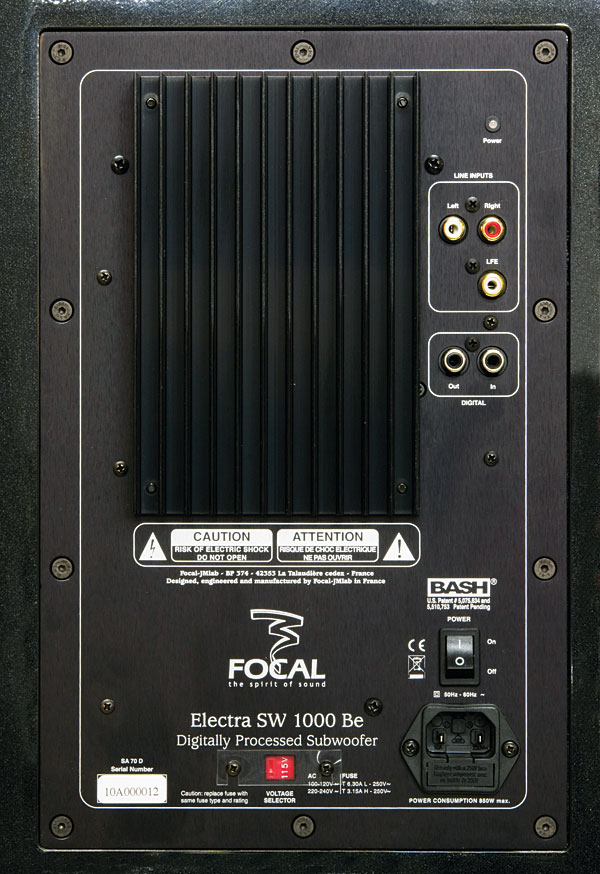
You can save three different setups using variations on the above controls in memory. All of the controls are accessible via a credit-card-sized remote; the settings are visible in a small window on the subwoofer’s front. Don’t lose the remote; there are no controls on the subwoofer apart from an Off switch. On one occasion during my tests, the subwoofer refused to respond to the remote. I powered it off, then on again, and that cleared the problem.
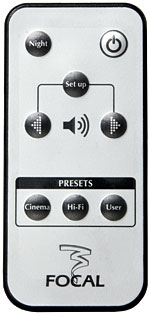 Setup
Setup
I set up the Electras in my usual 26-by-15.5-by-8-foot home theater studio. I placed the 1028 Be speakers about 9 feet apart to the left and right of my projection screen and toed them in toward the main listening position (I retract the projection screen for serious music listening). I positioned the center speaker on a low stand below the screen, the surrounds on 24-inch stands behind the listening location, and the subwoofer in the front right corner of the room (Focal recommends corner subwoofer placement).
I used a Parasound Halo A51 power amp and an Integra DTC-9.8 surround processor to drive the speakers. Sources included a variety of Blu-ray players and a Cambridge Audio Azur 840C CD player. Audio cables included designs from Monster Cable, Cardas, and Kimber Kable.
For movies, the Integra performed all crossover duties and directed all of the main-channel bass to the subwoofer’s LFE input. I turned off the sub’s Subsonic filter. I did all of my music-only listening in two-channel mode with no subwoofer.
All of the drivers are covered with grilles or, in the case of the tweeters, transit covers. The thin beryllium domes are extremely fragile—physically, that is, not sonically. Focal has made them easy to remove (they attach magnetically). If there’s significant household traffic in and out of your home theater room and/or an aggressive duster or curious child in the house, Focal recommends that you leave the transit covers on at all times except for your most serious listening sessions. Use extra care when you remove and replace them. I removed all of the grilles and screens for my auditioning. The speakers sound more open without them, but not dramatically so.
Music: Morning Becomes Electra
And afternoon and evening, as well. With the Electras at the pointy end of your system, you just might find yourself spending a lot more time listening to music and movies than you have before.
Even located well away from adjoining walls, the unassisted pair of 1028 Be speakers served up a surprisingly taut and powerful low end. The bass turned a little soft in some music passages, but that’s true of any speaker system in most rooms. More often, the Focals’ bass was strong and deep from the mid-30-Hz region up. The midbass, in particular, was tight and detailed. A few challenging passages, mostly organ- and synth-based, needed the power and weight of a subwoofer for a full serving of weight and drama. Otherwise, I was perfectly happy to listen to music on the 1028 Be speakers by themselves. I never sensed that anything was missing.
There’s little to say about the Focals’ midrange. Quite simply, it was as uncolored and real sounding as any I’ve heard in my listening room. The 1028 Be speakers also imaged like a champ (that’s typical of my room and setup) and provided all the depth I could wish for.





























































